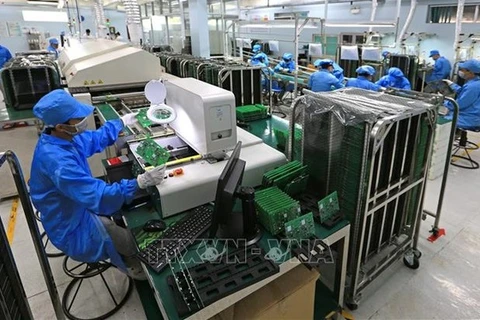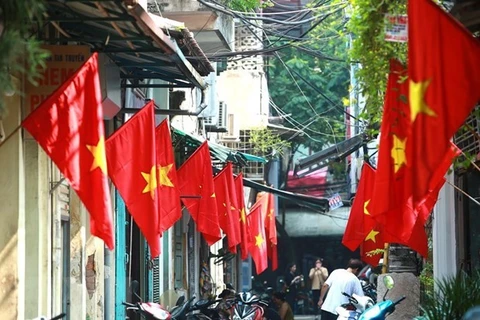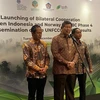 At the Japanese-invested Nidec Tosok Vietnam Co., Ltd, which manufactures mechanical parts in Ho Chi Minh City's Tan Thuan export processing zone. (Photo: VNA)
At the Japanese-invested Nidec Tosok Vietnam Co., Ltd, which manufactures mechanical parts in Ho Chi Minh City's Tan Thuan export processing zone. (Photo: VNA) The author said low wages are a large reason why so many manufacturers have moved to Vietnam in the last decade.
In addition, incorporating Vietnamese producers into supply chains is relatively straightforward both upstream and downstream. Unlike the ASEAN-4 nations (Indonesia, Malaysia, Thailand, and the Philippines), Vietnam shares a border with China, which makes it easier for manufacturing firms in Vietnam to integrate into China’s vast network.
The article added that in the downstream side, incorporating Vietnam into the supply chain is also a relatively unencumbering process. This is because Vietnam is home to two international airports, several major ports, reliable power, and easy internet access. The country is also small in geographic size, most suppliers are located close to an airport or major seaport, making it easy to get the finished goods from the factory floor and into the hands of waiting customers.
Vietnam is party to 15 different free trade agreements that encompass more than 50 countries around the world. For manufacturers, this means that a product produced in Vietnam can be sold to other markets – including many wealthier western markets – without needing to pay prohibitively expensive tariffs along the way.
The author noted another reason why investors may lean more towards Vietnam rather than some of the ASEAN-4 nations is Vietnam’s relative security and political stability. According to the US Department of State’s 2021 Investment Climate Statements: Vietnam, the country's political and security environment is largely stable and protests and civil unrest are rare.
In conclusion, the article stated combination of all four is clearly enough to make an impact. Vietnam has weathered the COVID-induced supply chain disruptions well, still being regarded as a key and growing manufacturing hub. As the government continues to strike free trade agreements around the world and invest in domestic transportation and communication infrastructure, Vietnam’s prominence as a rising manufacturing centre seems poised to continue to grow./.
VNA























